Where Is Melanesia?
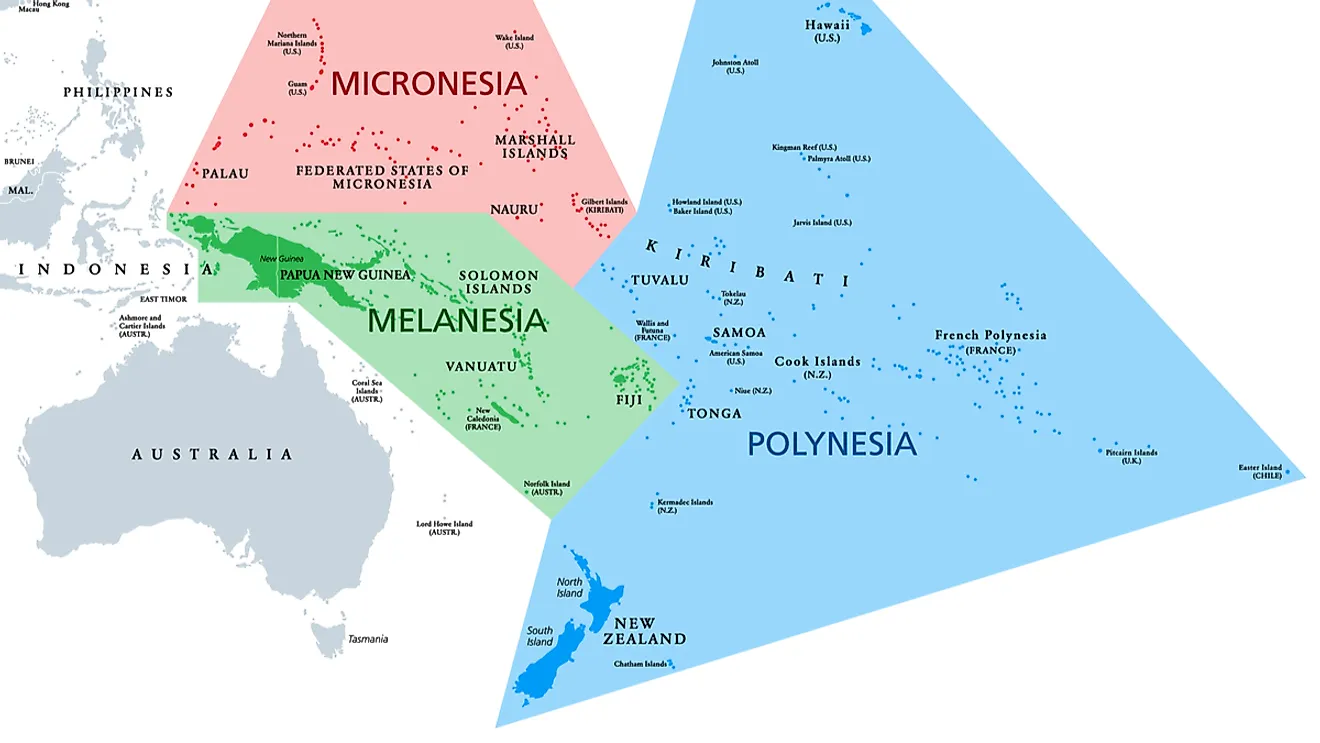
- Melanesia is a region located in the South Pacific Ocean consisting of roughly 2,000 islands.
- The term "Melanesia" is from Greek and means "black islands."
- Approximately 12 million people live in Melanesia today.
Melanesia is located in the South Pacific Ocean. It is made up of 2,000 islands stretching from the Arafura Sea in Indonesian waters to the eastern side of the western Pacific Ocean, and from the island of New Guinea in the north to New Caledonia and the surrounding waters to the south. About 12 million people call Melanesia home. In fact, the region has been inhabited by humans for tens of thousands of years. The name “Melanesia” is taken from Greek and literally means “black islands,” denoting the dark skin tone of the local inhabitants. In terms of political divisions, the region is divided among six independent countries and one colonial dependency. They are as follows:
- Fiji
- New Caledonia (French Dependency)
- Papua New Guinea
- West Papua and Makulu Islands (Part of Indonesia)
- Solomon Islands
- Torres Strait Islands (Part of Australia)
- Vanuatu
Contents:
Geography And Climate
Melanesia’s 2,000 islands have a combined geographical land area of around 386,000 square miles (1 million square km). Vegetation in the region consists of forested areas and jungles. Melanesia has a humid, tropical climate year-round. The weather becomes even hotter and more humid between the months of November and April, but gets cooler and dryer between the months of May and October. Melanesia is separated from Polynesia in the east and from Micronesia in the north by a geographical feature known as the Andesite Line, on which major earthquakes and volcanic activity occur.
Historical Overview
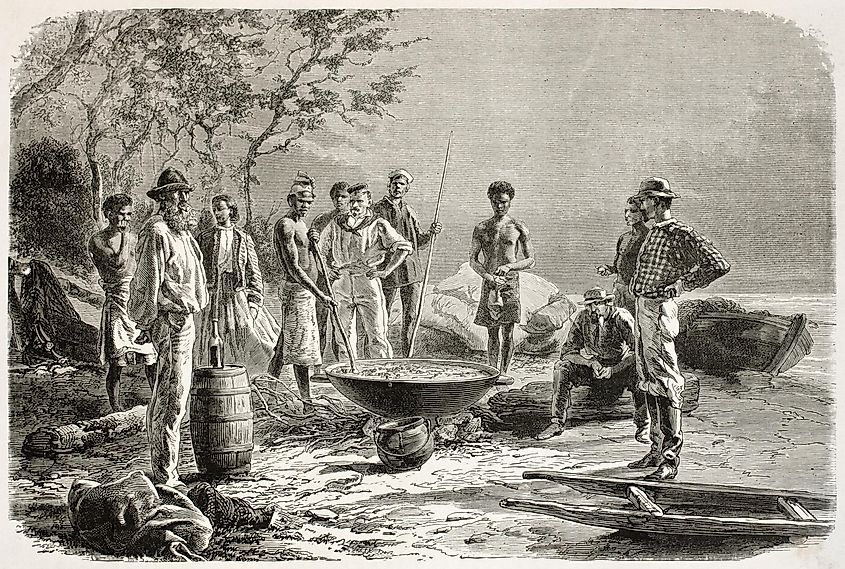
Human settlement in Melanesia dates as far back as 70,000 thousand years ago when the first inhabitants reached what are now the Torres Strait Islands. They are thought to have migrated from the Indonesian archipelago. Human habitation in New Guinea, the largest island of Melanesia, began around 40,000 years ago, with migrants who came down from the Southeast Asian peninsula. It was these settlers who brought one of the earliest forms of agriculture. A subsequent wave of migration, this time from Taiwan, brought seafaring skills, allowing Melanesia’s inhabitants to navigate the vast waters of the region. While the Maluku Islands (now part of Indonesia), the Bismarck Archipelago (islands to the east of New Guinea controlled by Papua New Guinea), and the Solomon Islands have been inhabited for the past 32,000 years, the islands of New Caledonia, Fiji, and Vanuatu were settled later, between 1500 and 1000 BCE.
The first Europeans began arriving in the 17th century, with colonization beginning in the late 18th century. By the late 1800s, all of Melanesia was controlled by European powers. The peoples of the region began pushing for independence from their European colonizers after World War II. The Maluku Islands and the western part of New Guinea eventually became part of the new, independent state of Indonesia. Fiji gained independence in 1970, Papua New Guinea in 1975, the Solomon Islands in 1978, and Vanuatu in 1980. The people of the Torres Strait Islands became full Australian citizens in 1967, while New Caledonia remains under French rule, though it has gained greater autonomy over the years. There are many New Caledonians who desire outright independence, though in a referendum that took place in 2020, the territory’s residents narrowly rejected a break with France.
Sea Life And Diet
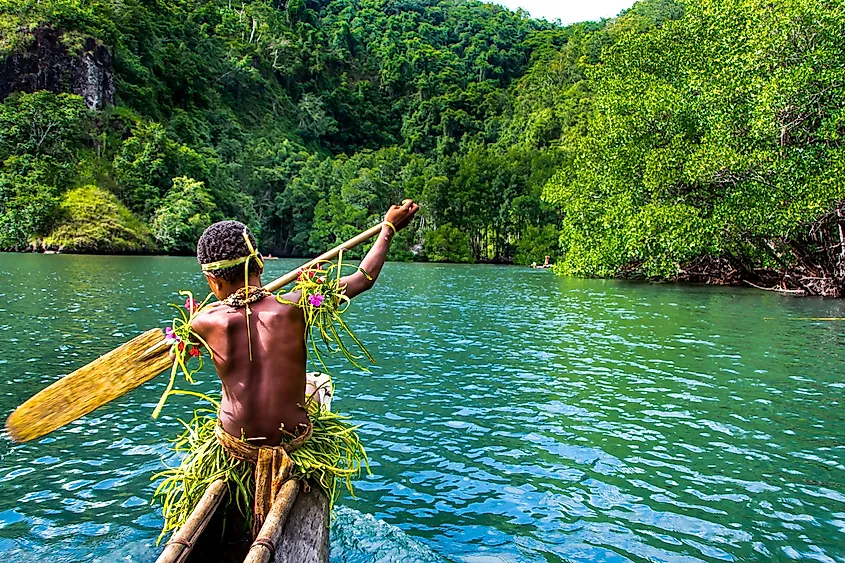
History records that the widely-spread communities in the region of Melanesia had trade relations with each other and were even politically integrated as far back as 3,000 to 3,500 years ago. Trade activity involving shell ornaments and obsidian was particularly prevalent. The ancient Austronesian people that first settled in Melanesia had sophisticated technology that allowed them to be capable seafarers.
Indeed, the Melanesians’ ability to navigate the vast waters of their region explains their affinity for fish and other seafood in their traditional diet. To this day, fishing remains at the center of economic life in much of the region. The traditional Melanesian diet also consists of root crops, leaves, coconuts, and fruit. The effects of globalization, however, have caused Melanesians to change the way they eat. Their diets now include more red meat and processed foods.
Social Class
As in the contemporary world, social standing in traditional Melanesian society depended on how much wealth a person, family, or group could amass. Hence, polygynous marriages (two or more wives sharing a husband) were common since they could produce more labor, and therefore, could accumulate more wealth. In fact, polygynous marriages of people with high status served as a tool for creating political alliances. Traditional societies in New Guinea were organized on a patrilineal basis, whereas societies on the smaller Melanesian islands were generally matrilineal. But the principle that a person’s first loyalty should be to their family was universal throughout the region.
Political leadership in traditional Melanesian society generally went to those with entrepreneurial success and those who had gained prestige through war. At the time of European contact, however, many Melanesians were ruled by hereditary chiefs, while some achieved leadership through a combination of heredity and ability. In general, local Melanesian leaders were people who had a monopoly over trade, or who achieved dominance on the battlefield.
Gender Norms
Historically, gender relations in Melanesia, especially New Guinea, have been defined by the belief in the potency and sacredness of reproductive fluids, such as semen and menstrual fluids, which were also considered dangerous. Therefore, any activity or ritual involving members of the opposite sex was considered risky. Women were responsible for producing food and also had a respected role in aspects of domestic politics. Status in some groups and rituals was sometimes passed on maternally. Women were also important in certain rituals as healers, elders, and ancestors.
In contrast, men in parts of New Guinea were to engage in other activities, which included ritualized homosexuality as a means for them to supposedly control the supernatural, as represented by bodily fluids and substances that the Melanesians considered powerful. These cults would also undertake initiation rituals and rituals that celebrated warfare.
Within residential communities, it was common for men and women to be segregated. Women and children lived in dwellings of their own, while men lived together with fellow members of their community. Such a living arrangement could easily be described as the traditional Melanesian version of a fraternity house.
Pre-Colonialist Culture
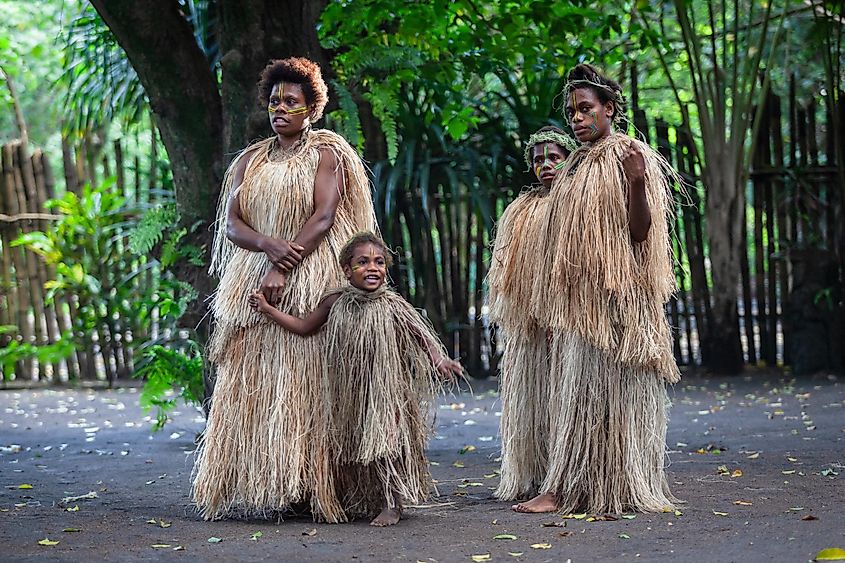
When Europeans arrived in Melanesia, they found that the people of the region wore very little clothing at all. In parts of New Guinea, for example, men walked about naked, wearing only a so-called “penis sheath” made from the gourd of a vine. The body has always represented a kind of art canvas for Melanesians. Many adorn themselves with tattoos, paint their faces and bodies, wear various headdresses or wigs, and don unique costumes. In other parts of Melanesia, many people wear what is known as a Laplap, which is basically a cloth that is worn around the waist or under the armpits to cover one’s body.
The cultures in Melanesia have been influenced by colonial rule, and so modern Western styles such as shorts or t-shirts can easily be found in many parts of Melanesia.
Religious worship in pre-colonial Melanesia generally centered on the importance of ancestors, or more specifically, the ghosts or spirits of those ancestors. Traditional Melanesian religious practices involve praying, making sacrifices, and rituals involving so-called magic or spells. Two important concepts in Melanesian religion are the concepts of Mana, which means efficacy or potency, and Tapu, which means sacred or forbidden. Traditional Melanesian society lacked full-time religious leaders, so those who acted as priests or magicians (traditional Melanesian spirituality incorporated magic) were no different than others who performed regular, daily activities.
Western Colonialism
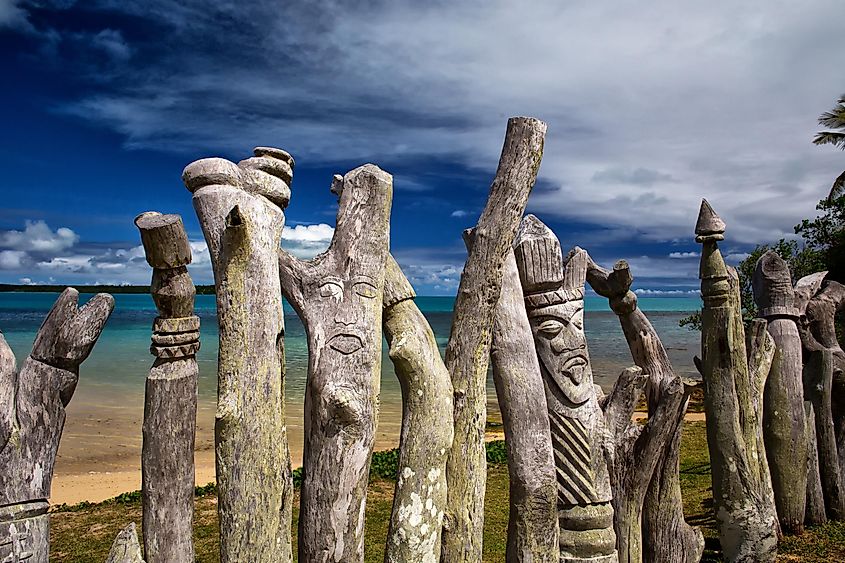
The arrival of Europeans radically changed Melanesian society. Firstly, the encroachment of the European powers resulted in radical religious changes, such as the advent of so-called cargo cults. These were cults formed by people who believed that their ancestors were withholding material goods from Europe. They set about destroying old ceremonial objects and prepared themselves morally, socially, and logistically for the arrival of vast quantities of European goods.
Secondly, the introduction of Christianity led to fundamental changes in Melanesian societies. Melanesians who were educated in Western Christian schools became the region’s new leaders. These same schools and missions also trained Melanesian missionaries and evangelists.
Thirdly, as was the case during the European colonization of the Americas, Europeans introduced new diseases to Melanesia, for which the local population had no immunity. Many Melanesians succumbed to these diseases.
In addition, the European powers exacerbated the warfare between local groups by providing firearms to warring parties. Indigenous political, economic, and trade structures collapsed and were replaced by colonial administrations and economic infrastructure.
Contemporary Melanesia
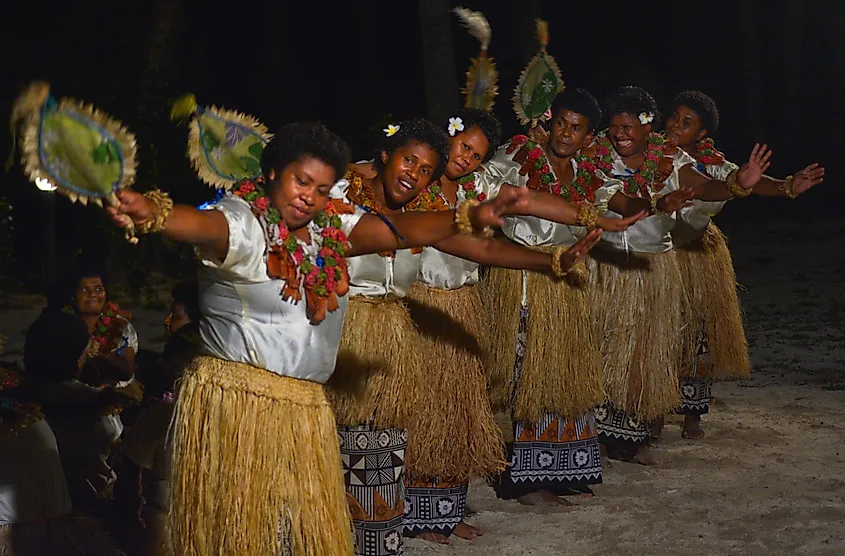
Today’s Melanesia is markedly different from the one that existed before the arrival of Westerners. For example, virtually the entire region is now accessible by modern transportation networks. Urbanization in the region abounds, and with it, the growth of shantytowns on the outskirts of cities, which are a common sight in developing countries, as more Melanesians leave their traditional rural communities to find work and educational opportunities in urban centers.
Christianity is now the prevailing religion in Melanesia. In fact, Melanesians are among the most devout Christians on Earth. Christianity has been able to spread and maintain a hold on the local population in part because the people charged with spreading the faith had knowledge of local languages and customs.
The economics of Melanesia have also changed through Western influence. For better or worse, the region is now part of the global economy. Multinational corporations and mass industry have made their way into the region. Logging and mining, for example, are important industries in Melanesia. As in many other countries around the world, economic interests have clashed with the interests of local communities who want to maintain their way of life and their environment.
Society and politics in Melanesia have also been westernized. Those who possess a Western education are now the upper class of society, as well as the leaders of their respective countries. There is, however, a prevailing ideology in Melanesia that calls for maintaining the region’s traditional customs, which some call “the Melanesian way.” As a result, Melanesia is seeing a revival of old customs and traditions that were long suppressed by Western colonial interests.











